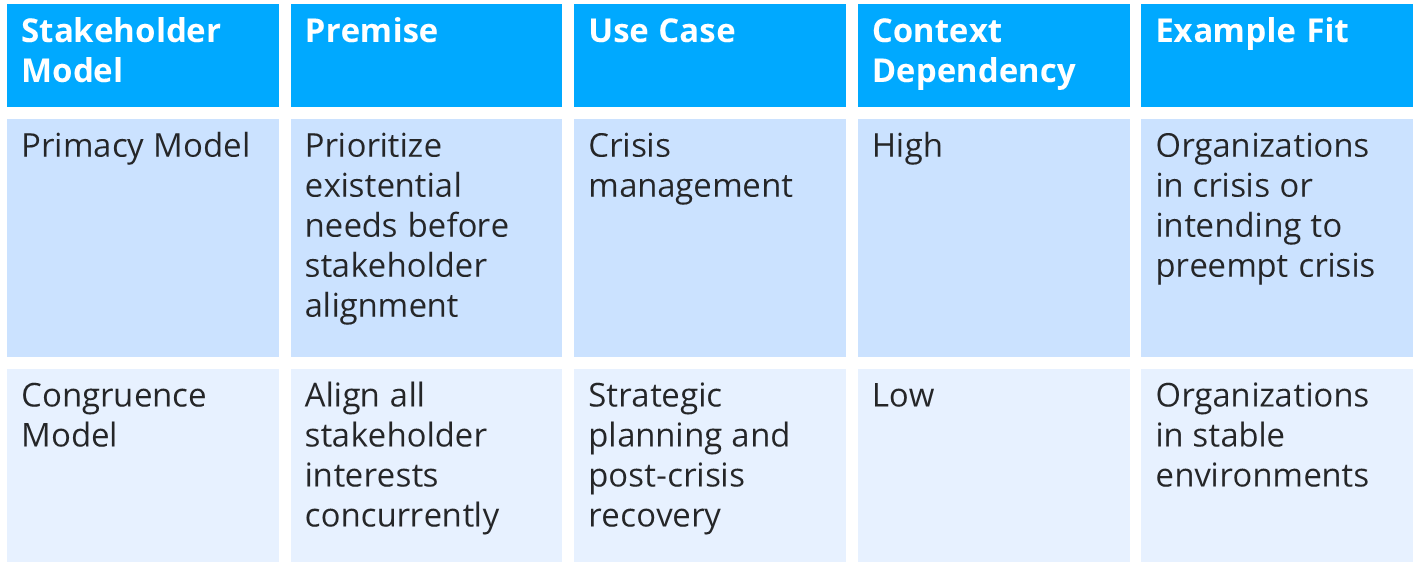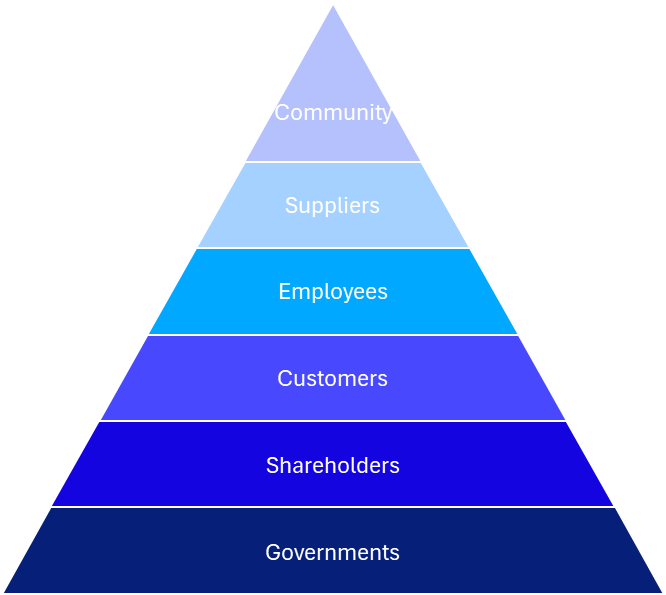

What the Paul Weiss Case Reminds CEOs and Boards About Stakeholder Alignment
By Srini Bangalore, Founder & Chief Client Officer
Introduction: The lesson from an existential crisis
In March 2025, law firm Paul Weiss faced an existential challenge when an executive order targeting law firms threatened its federal contracts, government access, and security clearances. Being persona non grata with the federal government could also lead to losing private clients. Paul Weiss secured its survival through concessions such as a $40 million pro bono commitment and policy reviews. This case demonstrates a crucial principle: survival must precede stakeholder alignment.
No enterprise—no matter how well-resourced or mission-driven—can prevail against the might of a sovereign government on its own without risking serious damage, and, perhaps, survival. Strategic retreat is not capitulation; it is pragmatism.
Why This Matters: The rising threat of existential risk
While recent and prominent, the Paul Weiss case is not an outlier. Existential threats can emerge overnight in an era marked by politicized enforcement, regulatory volatility, and fast-moving reputational risks. Whether it’s a government order, cybersecurity breach, or sudden liquidity crisis, leaders must be prepared to prioritize organizational survival above all and re-engage with stakeholder alignment as circumstances stabilize.
A much older example is the fall of Arthur Andersen in 2002. Once among the world’s leading professional services firms, Andersen collapsed under the weight of its role in the Enron scandal. The specifics differed—Andersen’s crisis stemmed from internal wrongdoing rather than external coercion—but the outcome was similar: an existential threat to an iconic institution. The takeaway is clear: when survival is on the line, firms must respond quickly and decisively, even if it means making unpalatable and unpopular decisions, irrespective of past reputation or intent.
Some organizations avoided becoming targets by proactively aligning or complying with power. Notable technology companies, for instance, made substantial accommodations in anticipation of a change in administration. These actions—right or wrong—reflected a calculated strategy of anticipatory compliance: aligning or complying early to avoid existential threats later. Others, such as the law firm Perkins Coie, are seeking judicial remedies while also trying to mobilize broader industry support.
This calls for a strategic framework that helps executives determine what to prioritize first and how to restore alignment once existential threats subside.
Zoom Out: Two models for stakeholder management
Organizations face a fundamental choice when deciding how to manage stakeholder interests and relationships—particularly in times of uncertainty. Two models emerge from both theory and experience as shown in Exhibit 1. The first, the Primacy Model, acknowledges that not all stakeholder interests can be congruent concurrently and prioritizes them. The second, the Congruence Model, attempts concurrent alignment across stakeholders to pursue mutual long-term interests and trust. The decision on which model to apply depends less on philosophy and more on context—urgency, risk, and coercion shape the right approach.
Exhibit 1: Stakeholder Management Models

Zoom In
Each model offers a distinct approach to managing stakeholder interests. This section explains how these models work in practice—and when each is appropriate.
The Primacy Model, in Exhibit 2, shows a hierarchy of stakeholders and acknowledges that interests must be prioritized because they cannot be concurrently aligned across stakeholders, and trade-offs must be made accordingly.
Exhibit 2: Primacy Model

This model is best applied when rapid decisions are required, such as in a crisis, and significant trade-offs are unavoidable. Despite a defined hierarchy, the Primacy Model allows for shifting stakeholder focus based on the specific nature of the threat—a primary stakeholder in one crisis may be secondary in another. Paul Weiss’s actions—agreeing to an unprecedented pro bono deal and auditing internal policies—were rationalized by the need to preserve the firm’s stability and continuity in response to government action.
Firms should define “existential criteria” in advance and build rapid-response teams that can make and prioritize decisions when time and options are constrained.
The Congruence Model, shown in Exhibit 3, is a system-interdependent model that views government, shareholders, customers, employees, suppliers, and communities as interconnected nodes whose interests should and can be aligned concurrently to maximize value for the collective while not shortchanging any group.
Exhibit 3: Congruence Model

This model fosters trust and resilience over time, especially for mission-driven organizations. The model is best applied in a stable environment or when threats are manageable. However, it may be infeasible under extreme duress. In coercive governmental, regulatory, or legal environments, the Primacy approach becomes essential. The situation, not the firm’s philosophy, dictates the stakeholder model. Two organizations, facing similar situations, may decide to use one model over the other based on the severity of impact to their operations.
Conclusion and Call to Action
Executives must recognize and acknowledge that existential resilience precedes stakeholder harmony. The Paul Weiss example reminds us that survival sometimes demands highly unpalatable and unpopular choices. That doesn’t absolve leaders from future alignment—but it requires a temporal approach.
Next Steps for Leaders
Survival is not optional in a crisis; alignment is aspirational. Know when to act and how to recover. CI
Note: References to both named and implied entities are based entirely on publicly reported news. Named entities were provided pre-publication drafts as a courtesy, per CASETEAM’s CORE protocol (Courtesy Outreach to Referenced Entities).

By Srini Bangalore, Founder and Chief Client Officer

The U.S. Congress’s mandate that ByteDance divest TikTok or face a ban is a significant development in global tech regulation.

The $24.6 billion Kroger-Albertsons merger, announced in 2022, aimed to create a grocery powerhouse to compete with Walmart and Amazon. However, regulatory opposition and public backlash…

Mergers and acquisitions are among the most transformative moves a company can make to accelerate growth — but it is commonly known that 70% or more of M&A transactions fail …

In today’s highly interconnected economy, supply chain resilience is no longer just a defensive strategy…

Between the forces of genAI disrupting all industries and a change of administration in the US, there is a widespread belief that M&A activity will pick up.

By Srini Bangalore and Cate (genAlyst™)

By Srini Bangalore, Founder & Chief Client Officer | Cate, genAlyst

CASETEAM Launches as GenAI-native and Hybrid-first Management Consulting Firm, Innovating a New Model that Makes Top-tier Problem-solving Accessible to More Organizations
By Integrating GenAI with Human Ingenuity, CASETEAM Creates a New Model for Management Consulting

Q&A with Cate, genAlyst at CASETEAM
[Note: Cate is a genAI model configured for the needs of CaseTeam]












Share this Post